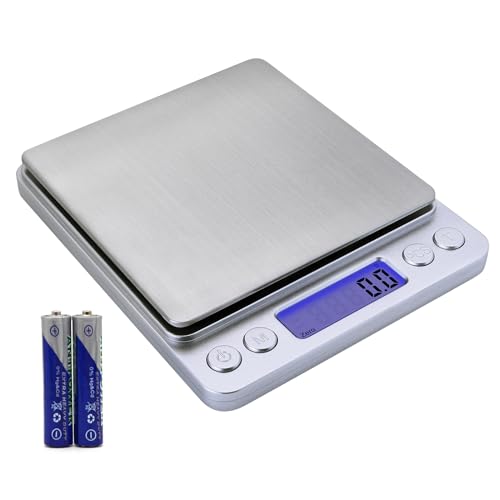Here is my belated explanation. I'm going to use this recipe as an example:
Coconut oil 200 g (soaping fat)
Lard 200 g (soaping fat)
Olive 200 g (soaping fat)
Meadowfoam seed oil 66 g (superfat)
NaOH 92.0 g
Water as needed for your preference
Now if you've been following the entire thread, we found, using Grayce and CS's method, that 66 g of meadowfoam added after the HP cook represents an 8% superfat for this recipe. Huh? What's that? If I take 8% of 666 g, that is 53.4 g, not 66 g!!! (The math: (200 + 200 + 200 + 66) * 0.08 = 53.4) Where in the heck is that 66 g coming from -- that's 10% of the total fats!
Yep, you're right ... that's 10% of the FATS. But superfat is all about the LYE, not the fat.
****
Let's take a step back for a moment and look at this recipe as a CP soap, where all of the fats are mixed together before the lye is added. The superfat in this case is whatever fat is left over after the lye gets done "eating". The math is simple because all of the fats are mixed together, and the saponification value (SV) of the mixed fat is just one averaged number.
In the example recipe, the average SV is 0.150 grams of NaOH per gram of mixed fat. When made as a "mixed fat" CP soap, 8% of the mixed FAT in the recipe uses 8% of the LYE. So if we want 8% of the fat to be unsaponified, we just use 8% less lye than is needed to saponify all of the fat. The first picture is a diagram of how this works.
This is exactly what soapcalc does when you set the lye discount for a recipe at anything other than zero. And this is the method that Songwind and I first proposed in this thread. It works fine for CP soap. This method also works find for HP soap where all the fat is mixed together in the beginning, just like CP soap. With these "mixed fat" methods, the superfat left over is just what's left over from the original fat mixture.
***
The second diagram shows how much lye each fat needs to saponify. The CO is 30% of the fat, but it needs a whopping 37% of the lye to saponify. The meadowfoam is 10% of the fat in the recipe, but it uses only 8% of the total lye.
****
Now let's assume the example recipe is made using the "add a special fat after the cook" kind of HP method. The superfat is then just that one special fat, not a mixture of all the fats in the recipe.
The first step is to figure out AT ZERO SUPERFAT, how much of the special fat will consume 8% of the total lye weight. Because the saponification value is different for each fat, the % of the lye used varies from fat to fat -- the second picture shows what's going on for the example recipe.
I want to point out here that the superfat calculated is always based on the weight of LYE required to saponify the superfat. This is just as true when calculating the superfat for the simple "mixed fat" CP and HP methods (above) as it is for this more complicated "add a special fat after the cook" HP method.
If a soap maker is creating a new recipe using the "add a special fat after the cook" HP method, she (or he) won't know the weight of the special fat. Because she doesn't know the weight of the special fat, she doesn't know the total weight of the fats and doesn't know the total lye weight. UGH!
What information would the soap maker know? She would know the desired superfat percentage, the weights of the soaping fats, the specific "special fat" to be added, and the saponification values of all the fats. There is enough information to solve the problem, but the solution is messy -- it will require Grayce's algebra or my trial-and-error solution to find the weight of the "special fat".
Once the "special fat" weight is known, we can add up the weight of all the oils to get the total weight. We also know the lye amount to saponify ALL the oils at ZERO superfat, but that's really not needed anymore. Throw out that number and refigure the lye to saponify ONLY the soaping oils at ZERO (or very low) superfat. Make the soap with the soaping oils and that amount of lye. Add the correct weight of the "special fat" after the cook, and you're done!
****
Okay, let me know if this makes sense!












































